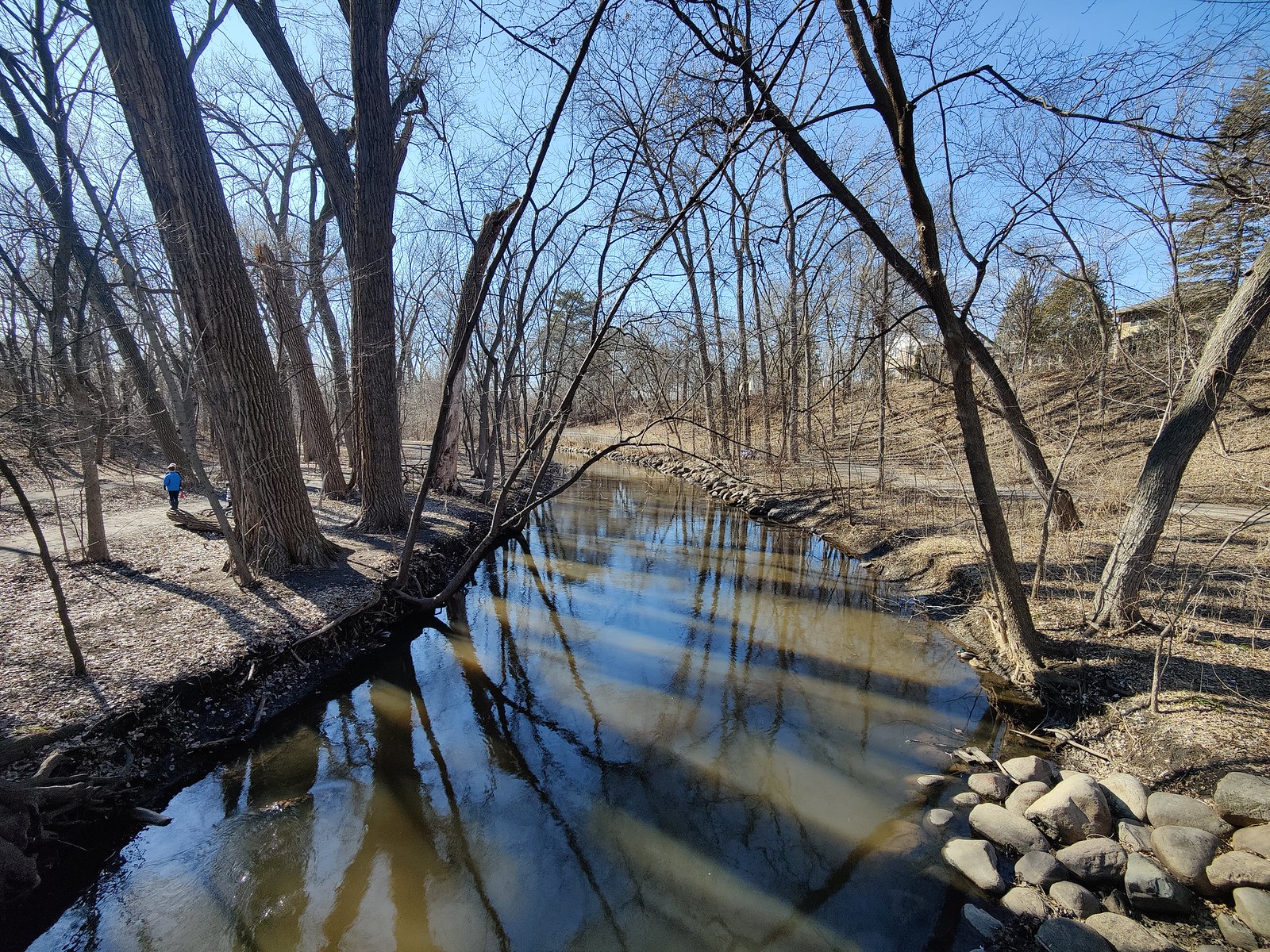OnePlus finally gets the camera right on the OnePlus 9
A lot of us on this website have followed along with OnePlus for the entirety of its corporate journey so far. A company that started off with a singular yearly release has evolved into one that spans multiple products across a few product segments. With the OnePlus 9 series, the spotlight may no longer be as focused on the regular OnePlus 9 as it has been on the regular variants in the previous generation, but it still warrants a closer look, only if to see how far OnePlus has come along.
With the OnePlus 9 series, OnePlus has adopted the Hasselblad name to add some flair to its camera prowess. And the company insists that it is more than just the name, as the Hasselblad partnership comes along with a $150 Million investment commitment towards mobile imaging over the next three years. There’s a new color solution onboard, called Natural Color Calibration, that is a result of the Hasselblad collaboration, claimed to “result in more perceptually accurate and natural-looking colors“. There’s also a new Hasselblad Pro Mode for the camera UI, as well as 12-bit RAW format support.

I have been reviewing OnePlus devices for years, ever since the OnePlus 2 — old XDA readers might know by now that I’ve had my fair share of issues with their cameras. In fact, all of these long-standing problems I had with OnePlus smartphone cameras culminated in my harsh review of the OnePlus 8T’s shooter, which I deemed the weakest aspect of the phone due to longstanding issues that were “borderline unacceptable in such an expensive phone”. The OnePlus 9 Series, though, promises to redeem the brand by addressing some of the most common critiques that many (myself included) have consistently pointed out. It’s OnePlus’ hope that their partnership and the resulting “Natural Color Calibration” will see the company usher in a new era of mobile photography. So with such high expectations, how does the OnePlus 9 camera perform?
OnePlus 9 Series: Specifications
OnePlus 9 Series: Specifications
| Specification | OnePlus 9 | OnePlus 9 Pro |
|---|---|---|
| Build |
|
|
| Dimensions & Weight |
|
|
| Display |
|
|
| SoC |
|
|
| RAM & Storage |
|
|
| Battery & Charging |
|
|
| Security | In-display fingerprint scanner | In-display fingerprint scanner |
| Rear Camera(s) |
|
|
| Front Camera(s) | 16MP Sony IMX471, f/2.4, FF, EIS | 16MP Sony IMX471, f/2.4, FF, EIS |
| Port(s) | USB 3.1 Gen1 Type-C | USB 3.1 Gen1 Type-C |
| Audio |
|
|
| Connectivity |
|
|
| Software | OxygenOS 11 based on Android 11 | OxygenOS 11 based on Android 11 |
| Other Features |
|
|
| Colors | Winter Mist, Arctic Sky, Astral Black | Morning Mist, Forest Green, Stellar Black |
About this review: I received the OnePlus 9 Astral Black unit from OnePlus North America. This review is after approximately 10 days of use. OnePlus had no input into the contents of this review.
OnePlus 9: Camera
Before we jump onto select shots and extensive comparisons, let’s get the numbers out of the way. Both OnePlus 9 Series devices feature the same ultra-wide camera, the notable and massive 1/1.56” Sony IMX766 that OPPO co-developed with Sony and was prominently featured on the Oppo Find X3. The key advantage of this sensor is its curved Freeform Lens that reduces edge distortion compared from the usual 10% to 20% of other smartphone ultra-wide cameras to around 1%, which is as good as it can practically get. This camera also serves as a macro camera that’s good up to 4cm away from the subject. The 48MP main camera of the OnePlus 9, on the other hand, features the 1.143” Sony IMX 689 sensor (different from the OnePlus 9 Pro’s Sony IMX789 main sensor). OnePlus boasts faster focus speed, more color information, and improved dynamic range as well as new camera modes.
Lastly, the camera user interface has been redesigned, though it’s not a very radical departure from previous iterations. There’s an imposing orange button for clicking pictures now, which makes a new and satisfying clicking noise, but the real improvements come in the Pro mode. The new Pro mode UI is fantastic, with a variety of bells and whistles such as an included histogram, a visual indicator for camera tilt, and slick and easy-to-access dials to control the various settings (ISO, focus, exposure time, white balance, etc). It also gives you the option to shoot in 12-bit RAW for even more color information.




All of that sounds great, but what about the actual pictures? I took a ton of pictures with the OnePlus 9, and tried my best to test whether it really was able to address the aforementioned camera pitfalls. Indeed, I went out of my way to capture the kind of scenes that I have come to learn previous OnePlus phones performed badly in. I’ll separate the select samples in different sections, each focusing on a particular type of scene, and will comment on several pictures as well.
Outdoor shots
Beginning with outdoor shots, we begin getting a clearer picture as to how OnePlus’ camera has evolved. I intentionally tried to capture pictures that have a good selection of primary colors — blue skies, green vegetation, red accents.




I was very surprised at how accurately the OnePlus 9 was able to capture so many of these colors. For example, the blue skies in the pictures are much closer to reality than anything previous OnePlus phones captured at the time of my reviews (the OnePlus 7T was particularly bad in this regard with its saturated skies). Even vibrant elements of scenes, such as the red church doors and the red-orange road work sign, were fairly faithfully captured. The same goes for the colorful chalk lines in the asphalt and the reflections on the Weisman museum’s metal shell.


Telephoto shots, a staple of modern flagships, are clearly lacking however due to the absence of dedicated, powerful hardware.








The wide-angle shots, in particular, were excellent, and the difference in color between modes is smaller than I expected.




Night time pictures were understandably soft, and the improved Night Mode didn’t work as well as I expected it to. However, just from looking at the pictures above, you would underestimate how dark the actual scenes really were, as the shots came out quite bright.
Pets
Moving on to another typical smartphone camera use case: pets! Like most cat owners, I take an incredible amount of pictures of my very photogenic furball, and I remarked in previous reviews that OnePlus phones typically did a poor job at accurately capturing the color of her coat. That is, OnePlus phones tended to over-saturate the orange hues in her fur, in turn making her look a lot more vibrant than she really is. Following the trend seen above, the OnePlus 9 actually renders her fur accurately.


The same goes for my wooden floor, as seen in the comparison above.
Overall, pictures present a great amount of detail, and the dedicated macro mode did quite a great job at capturing finer details on my cat’s nose. As far as pet pictures go, this device’s more true-to-life color science makes a big difference.
People
We also use smartphones to take pictures of people, and indeed the OnePlus 9 performed fairly well in a variety of scenarios. Whether indoors or outdoors, the main camera’s auto-mode and bokeh shots both looked quite well.






However, we see some of the common bokeh pitfalls, such as incorrect delineation of fine features like sunglasses.

The amount of blur is quite pleasing, and the phone allows portrait mode shots using the wide-angle lens as well, but as seen in the sample above, the results can be less than stellar. Indoor and low-light pictures are much softer than I expected at the time of capture, as seen in the examples above. The front-facing camera is serviceable even in indoor settings.
Indoors






In general, indoor shots were quite good, with great detail and more accurate colors, whether with natural or artificial light sources.




The pictures above also showcase the scope and quality of the wide-angle camera and its lack of edge distortion.
Food
Food is also a typical subject for smartphone pictures, and the OnePlus 9 produced some really good shots in this respect.





I did get the occasional dud – see the poor focus at the center of the meatball cheese bread sandwich, for example – but the surprising part was, again, the colors on display. These were quite colorful meals, and I would have expected a OnePlus phone to take serious liberties with color reproduction.
OnePlus 7T, OnePlus 8T, and OnePlus 9 Comparison
This saturation restraint (the good kind) can best be seen in the comparison shots between the three phones. Again, I tried to capture scenes with at least some interesting color. Below are sets taken from the OnePlus 7T, OnePlus 8T, and the OnePlus 9, in that order for each set.


















Right off the bat, we see that the previous OnePlus phones totally overdid the saturation in the pizza comparison. The same goes for several outdoor shots in the comparison, most notably when it comes to the sky. Having been there capturing all of these pictures, I can attest to the OnePlus 9’s overall color fidelity — its pictures were the ones that resembled the actual scenes the most, whether we are talking about the glossy blue table or the pastel nodes of the giant molecular model.
Video Recording
Video is also really great, and the OnePlus 9, letting you record up to 8K footage at 30 frames per second. The slow-motion mode proved to be as fun as always, and actually better than previous OnePlus phones from my experience. Other cool features include Nightscape Video 2.0 for even better quality in dim environments as well as a more time-lapse video. In the end, however, the biggest improvement in video capture comes from the changes in color.
Conclusion: The OnePlus 9 is the most refreshing OnePlus camera I’ve ever used
The above samples and commentary should make it clear that OnePlus has indeed made noticeable changes to their camera processing, a very welcome change given their previous phones’ reception. Indeed, it even seems that the infamous “indecisive color temperature” issue that I found in every OnePlus device dating back to the OnePlus 6 is finally gone, as this is the first time that I was unable to reproduce it on a review unit. These and other fixes, as well as the change in color science, made it so that this is by far the most refreshing OnePlus camera I’ve ever used.
The post OnePlus finally gets the camera right on the OnePlus 9 appeared first on xda-developers.
from xda-developers https://ift.tt/2OZ5UoE
via IFTTT







No comments: